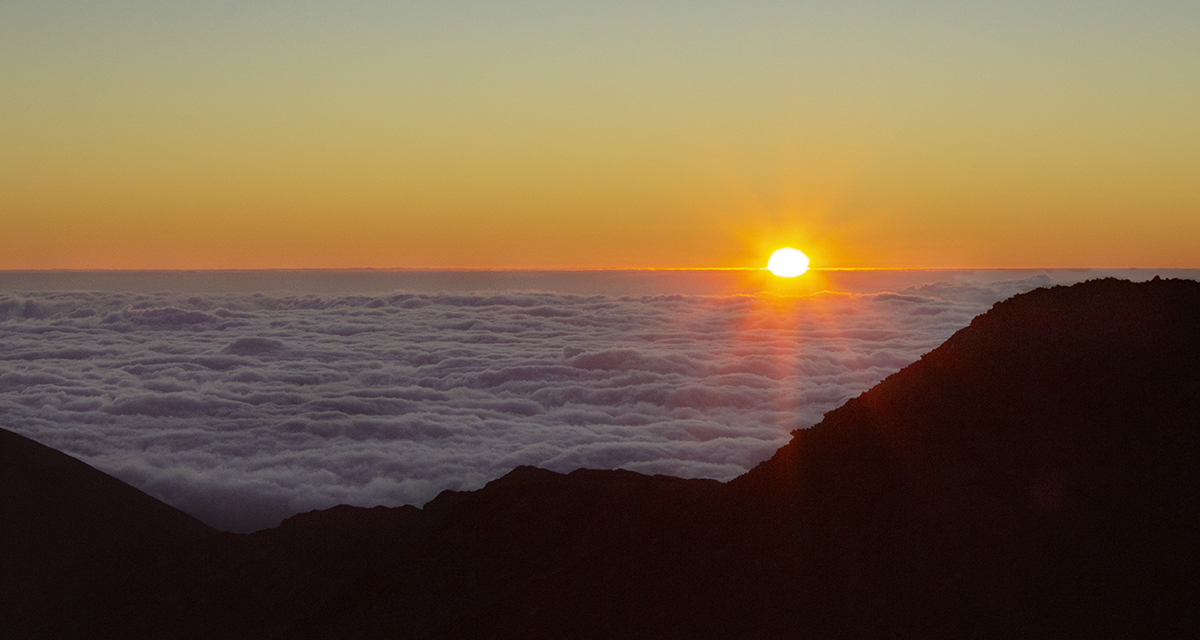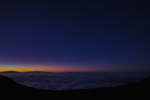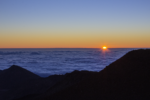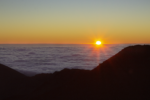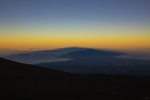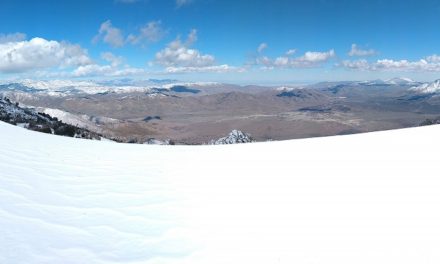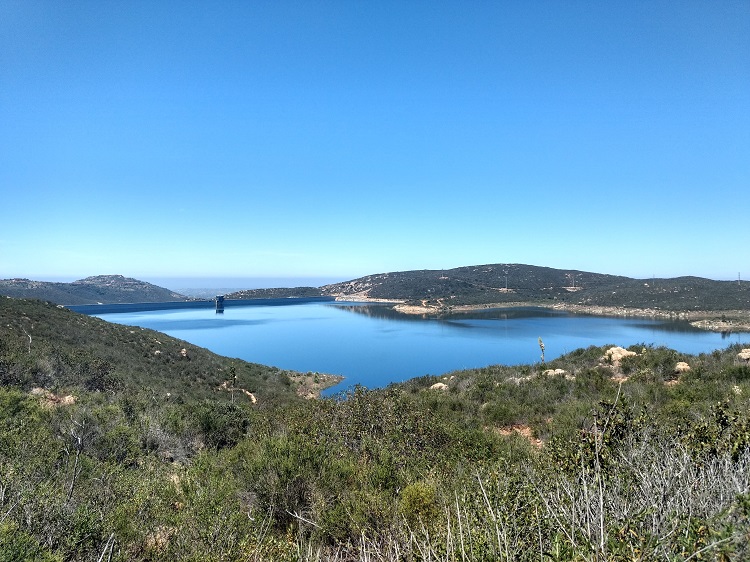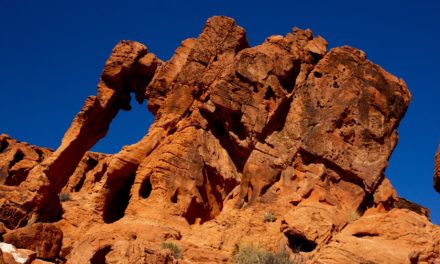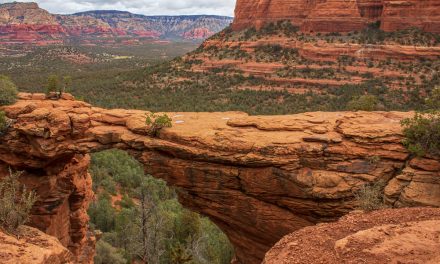Haleakala Sunrise Viewing Guide
On the Island of Maui, Hawaii rises up out of the ocean a mountain that reaches 10,023 feet. The mountain, named Haleakala, is a dormant shield volcano which over thousands of years grew to make up the majority of the Island of Maui. The towering mountain features harsh lava field deserts, rich tropical valleys laden with waterfalls, and a cold summit with rare species of plants. The dormant volcano is so unique that the National Park Service created Haleakala National Park with three distinct districts throughout the mountain
On the summit district of the National Park, the elevation reaches just over ten thousand feet. The high altitude sits well above the majority of the cloud line giving people the perfect opportunities to watch the sunrise or sunset and stargaze. In recent years, watching the sunrise from the top of Haleakala has become one of the most popular things to do in the National Park. In fact, the Haleakala sunrise viewing has become so popular that as of 2017, permits are now required to get to the summit of the National Park from the hours of 3 a.m. to 7 a.m.
Haleakala History
In Hawaiian, Haleakala means, house of sun, which references the Hawaiian deity, Maui. . According to Hawaiian culture, Maui wrestled with the sun at the top of this volcano. The legend starts after Maui’s mother complained that there wasn’t enough light during the day to complete all her tasks. Maui took to the top of Haleakala and captured the sun with a hook and fishing line and secured him to a tree. The sun begged to be released but Maui would only do so if the sun promised to move more slowly across the sky and provide more daylight.
Legends aside, it’s the views from the summit of Haleakala that attract so many people. The pristine air is often clear, and to be honest, sunsets can be just as beautiful as sunrises from this location. However, sunsets are more often obscured by cloudy afternoons in the tropics. From the top of the mountain there will be 360-degree views. To the east, the mountains of Mauna Kea, Mauna Loa, and Hualalai on The Big Island will be visible. From sea level, Mauna Loa is also actually the tallest mountain in the world. To the west will lie the islands of Kaho’olawe, Lanai, and Molokai’i. To the east white fluffy clouds will line the horizon as the Pacific Ocean stretches out as far as the eye can see. As the sun rises it quickly paints the neighboring mountains and red volcanic craters of Haleakala in beautiful saturated colors. All while, the nearly eleven foot thousand mountain casts its shadow below.
Obtaining Haleakala Sunrise Permits
In order to view the sunrise from the summit, a permit is required. The National Park Service implemented a permit system for the summit because of overcrowding in the park. There is limited space available at the summit and permits do go fast. Don’t expect there to be any way out of this as there only one way into the summit distric with a ranger checking for permits on entry. An entrance fee to the park is also required in addition to the permit. An America The Beautiful Pass will also work.
Reservations are only available up to sixty days in advance. The cost of Haleakala Sunrise Permit is only $1.00. Reservations can be made one of two ways. One way to reserve tickets by calling 1-877-444-6777. The easiest way to obtain a permit is through Recreation.gov. If the window was missed to buy permits in advance, a limited number of tickets are released at 4:00 p.m. two days beforehand. The reservations are released on a first come first serve basis and only available for the specific day. Because of the high elevation, sometimes inclement weather can make conditions hazardous or unsafe. In the unfortunate event that this happens, there are no refunds or reservations available for a different day. Another way to get access to the summit if permits are sold out are through local tour companies that shuttle visitors up.
On A Personal Note:
Watching the sunrise from the summit of Haleakala National Park is one of the most memorable sunrises I have ever seen. The clean air and often cloudless days make the air quality incredibly sharp. I highly recommend this experience for those people visiting the Island of Maui. Immediately after the sun rises, look to the opposite side of the mountain. From here the triangular mountain shadow phenomena will be visible. Mountain shadows happen when the sun casts a shadow on to the region behind them for miles in the opposite direction. The shadow will appear triangular despite the mountain’s round formation. The temperature at the top of the mountain can be frigid year round so check the best time of year on tips for weather conditions below.
Do you have any updates to this trip or want to share any pictures? Please leave a comment below.
- Overall Difficulty: 15%
- Overall Views: 100%
Haleakala Sunrise Viewing Quick Facts:
- Elevation: Approx 10,023 feet (depending where you choose to watch the sunrise).
- Estimated Distance: No hiking required.
- Estimated Time: Arrive at least an hour before the sun comes up.
Haleakala Sunrise Viewing Directions:
If using GPS, be sure to have the directions plugged in ahead of time. I can guarantee that cell phone service will be lost at some point up the mountain. Also, be aware that this will be a very early morning. Arrive at least an hour before sunrise because parking is very limited at the summit and fills up very quick. Do know that the very top of the park isn’t the only place to watch the sun come up. Other locations such as the visitor center will be just fine. Cost of is admission to the national park. An America The Beautiful Pass will also work. Don’t forget the sunrise permit.
Haleakala Sunrise Pictures:
- The sun coming up above the clouds over the Pacific Ocean.
- Looking to the Southeast from Haleakala the peaks of Mauna Kea, Mauna Loa, and Hualalai will be visible. From the surface of the ocean, Mauna Loa is the tallest mountain on earth.
- After the sunrise, turn your head to the west. The height of Haleakala will cast a triangular shadow out over the rest of Maui and the Pacific Ocean.
Who Haleakala Sunrise Viewing Is For:
Advanced Hikers: Same.
Expert Hikers: Same.
It’s always a good idea to be aware of what type of hiking level you’re at.
Best Time Of Year To View The Haleakala Sunrise:
Most of the year, weather on the top of Haleakala tends to be rather mild. Because Hawaii is the tropics, clouds and light showers aren’t out of the question any time of the year. Fog can roll in on a moments notice. Mornings tend to have less clouds than the evenings. Afternoon heat can cause clouds and rain to often form later in the day and obstruct the view. Windy conditions are the norm at the top. The elevation of Haleakala is over ten thousand feet and keeps things cool. Windchill in the mornings can often be below freezing. Always prepare for cold weather and always check the weather report before heading up to the summit.

